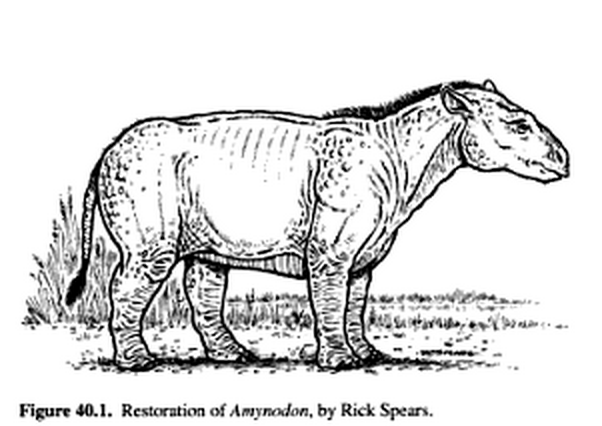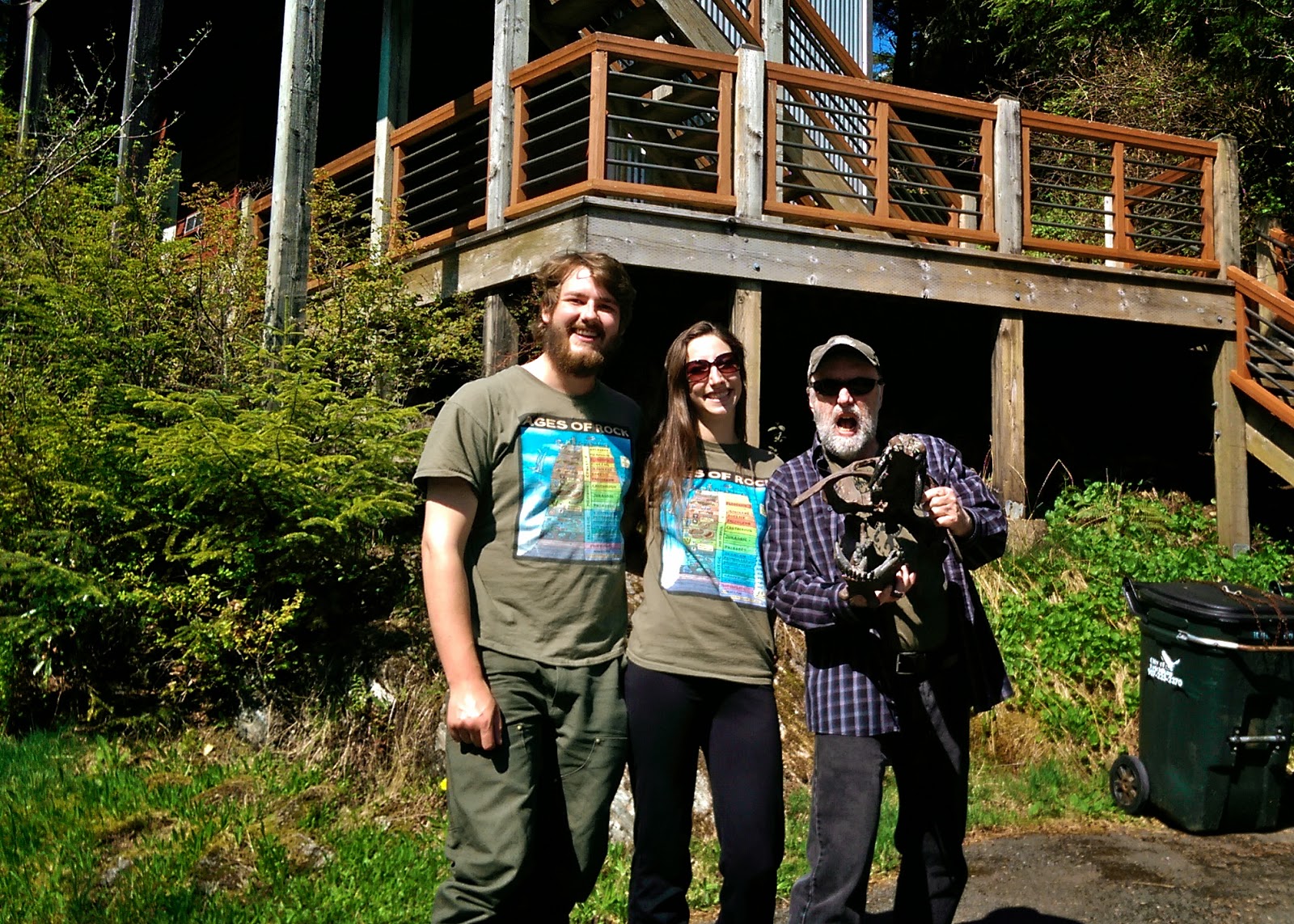Showing posts with label coy pictures of extinct animals. Show all posts
Showing posts with label coy pictures of extinct animals. Show all posts
Thursday, February 26, 2015
Awesome Dead Shit: Amynodonts
It's that time of the month again! No, no, calm down - not time for more genitals, just some awesome dead shit.
Sunday, January 25, 2015
Cenozoic Cheat Sheet
Meaghan likes to give homemade Christmas gifts. Last year she made nerdy science-themed chocolates, and the year before that she designed dorky mugs. This year, she decided to go a big more useful and create the only calendar that really matters... the Cenozoic calendar. Really, Meaghan was just kind of tired of looking up the NALMA (North American Land Mammal Ages) divisions and decided to make a cheat sheet for herself illustrated with her lab's favorite Cenozoic animals!
 |
| Hadrianus, a big ol' tortoise |
Thursday, September 25, 2014
Awesome Dead Shit: Glyptodonts
Amy saw an armadillo last week so she is now inspired to write about some of their extinct cousins, the glyptodonts.
Glyptodonts were crazy cool mammals that lived during the Pleistocene Epoch from 2.58 Ma until they went extinct about 10,000 years ago, possibly from climate, disease, or from people over-hunting them and using their shells as emergency shelters. Talk about a fulfilling meal! They lived in South America and migrated as far north as Arizona and Texas during the Great American Biotic Interchange about 2 million years ago along with some other South American fauna, like our old friend Thylacoleo. This biotic interchange was the first time South America had come into contact with another continent since the breakup of Gondwana back in the Mesozoic, meaning that the South American fauna had ~63 million un-interrupted years of evolution all to themselves, which is why those endemic species are so flippin' WEIRD. Glyptodonts are no exception to that rule and belong in the superorder Xenarthra along with sloths, anteaters, and armadillos, which of course means they are phylogenetically awesome.
 |
| Awesome art by NachoSammich |
Glyptodonts were crazy cool mammals that lived during the Pleistocene Epoch from 2.58 Ma until they went extinct about 10,000 years ago, possibly from climate, disease, or from people over-hunting them and using their shells as emergency shelters. Talk about a fulfilling meal! They lived in South America and migrated as far north as Arizona and Texas during the Great American Biotic Interchange about 2 million years ago along with some other South American fauna, like our old friend Thylacoleo. This biotic interchange was the first time South America had come into contact with another continent since the breakup of Gondwana back in the Mesozoic, meaning that the South American fauna had ~63 million un-interrupted years of evolution all to themselves, which is why those endemic species are so flippin' WEIRD. Glyptodonts are no exception to that rule and belong in the superorder Xenarthra along with sloths, anteaters, and armadillos, which of course means they are phylogenetically awesome.
Monday, June 16, 2014
Trolling the Fossil Freeway with Ray
Even if you haven't heard the name Ray Troll, it's still almost guaranteed that you've seen some of his artwork. Maybe you saw an amazing museum exhibit, or picked up a copy of Cruisin' the Fossil Freeway, or perhaps you remember a few weeks ago for Mary Anning's birthday we debuted an awesome piece of his:
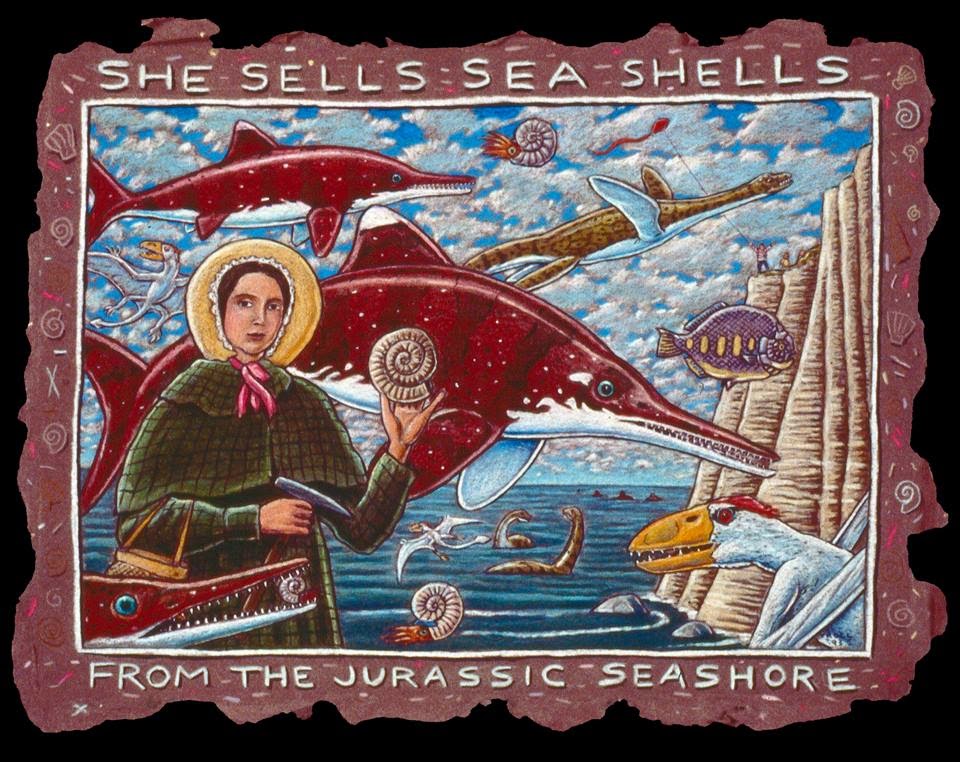 |
| “Mary Anning's story was really inspiring to me and Brad when we made that book all those years ago and then finding out “she sells seashells by the seashore…” it's all about her..." - Ray Troll |
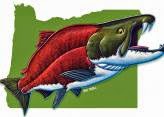 But Ray Troll is much more than an amazing artist: he's a top-notch paleonerd, amazing author, game-creator, science education advocate, fish enthusiast of the strongest sort, and also a musician! He also recently completed a project close to home for the Vengeance Team: he painted the mural of the Saber Toothed Salmon fossil, part of the Explore Oregon exhibit at the University of Oregon Museum of Natural and Cultural History (That exhibit is freshly opened and extremely awesome, so if you get a chance you should swing by and check it out).
But Ray Troll is much more than an amazing artist: he's a top-notch paleonerd, amazing author, game-creator, science education advocate, fish enthusiast of the strongest sort, and also a musician! He also recently completed a project close to home for the Vengeance Team: he painted the mural of the Saber Toothed Salmon fossil, part of the Explore Oregon exhibit at the University of Oregon Museum of Natural and Cultural History (That exhibit is freshly opened and extremely awesome, so if you get a chance you should swing by and check it out).Amy and blog assistant/boyfriend Kelly were lucky enough (Meaghan is SUPER GODDAMN JEALOUS) to sit down with Ray Troll and his wife Michelle at their beautifully fossil-decorated house in Ketchikan, Alaska and pepper him with questions about his music, art, connections to Mary Anning and paleoichthyology musings while Meaghan sat at home grumbling and doing science stuff.
Sunday, March 2, 2014
Awesome Dead Shit: Thylacoleo
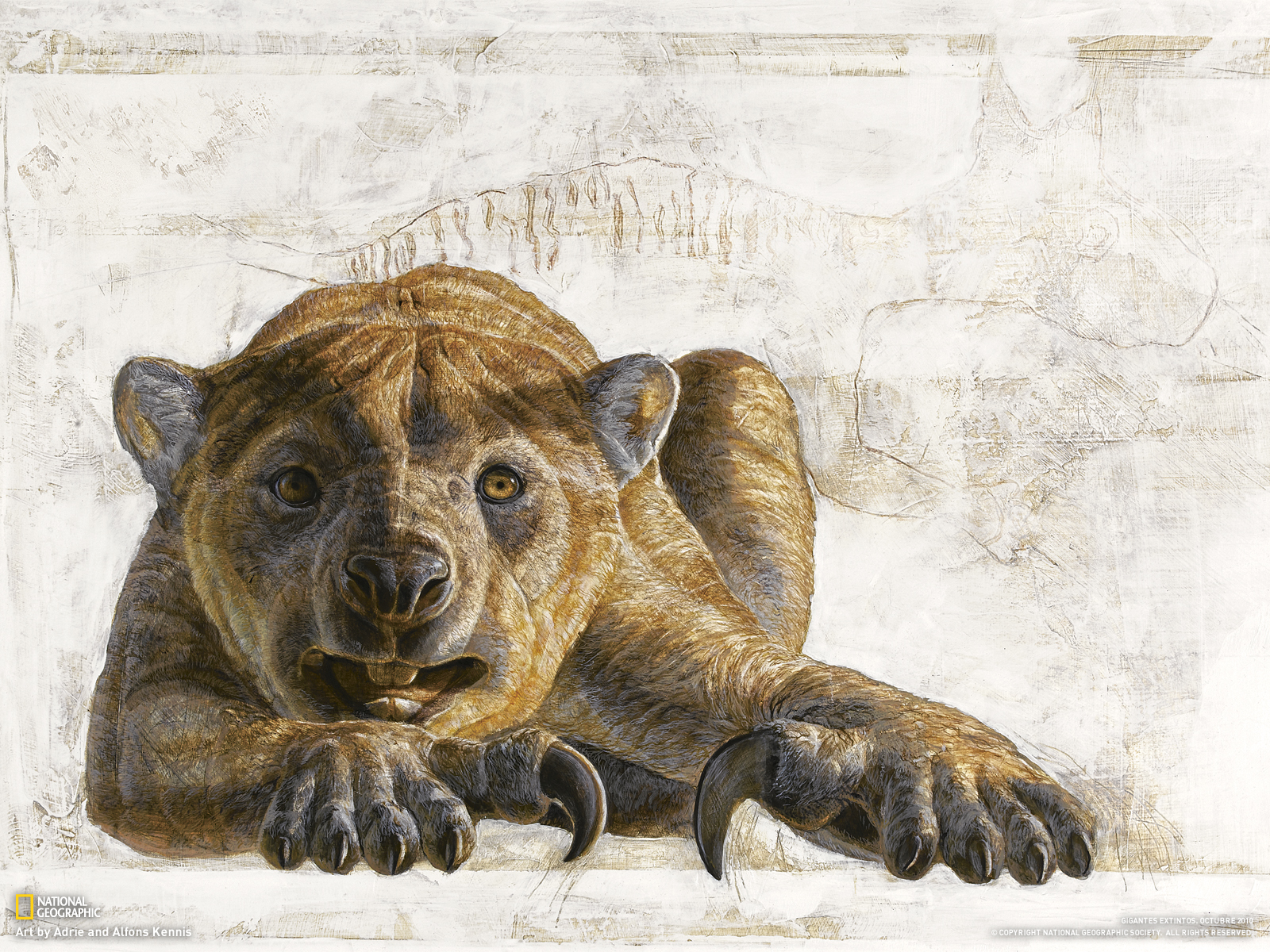 |
Monday, June 10, 2013
A Moment of Silence for Omomyids
There's plenty of good news from Vengeance Team North - not only has Amy not been eaten by any bears, her Honors College thesis is officially printed and turned in! Now that the thesis process is over, Amy has made herself quite comfortable in the Alaskan wilderness, focusing on Cretaceous age organisms including, of course, dinosaurs. As absolutely stoked as she is for this exciting new adventure in life, Amy is also finding herself sad to be leaving (for the moment at least) her beloved omomyids. In order to mourn the commencement of this project and properly move on, Amy has decided to cathartically explain the fantasticness of omomyids. And you should pay some attention because this shit was funded by a very competitive national scholarship, therefore solidifying what Amy has long known to be true: cuteness is a fascinating and intriguing scientific phenomenon.
Other than cooing about how cute omomyids are, Amy spent her senior year using phylogenetics to explore some of the evolutionary patterns of this group.
Phylogen-what-now? some of you may be saying (we have a substantial readership in the shocked-grandma demographic). Despite what it sounds like, phylogenetics isn't the science of wrapping extinct organisms in flaky and delicious phyllo dough crust and devouring them. It's actually a type of research that shows the evolutionary relationships between organisms. It's the science of creating meaningful family trees. Many of the scientists who do phylogenetic research are biologists who use molecular sequencing data that they extract from living creatures. Contrary to Jurassic Park, fossils are A) super dead and B) usually lacking DNA, so how do paleontologists use this particular toolset?
 |
| Goldwater-funded adorableness. |
Phylogen-what-now? some of you may be saying (we have a substantial readership in the shocked-grandma demographic). Despite what it sounds like, phylogenetics isn't the science of wrapping extinct organisms in flaky and delicious phyllo dough crust and devouring them. It's actually a type of research that shows the evolutionary relationships between organisms. It's the science of creating meaningful family trees. Many of the scientists who do phylogenetic research are biologists who use molecular sequencing data that they extract from living creatures. Contrary to Jurassic Park, fossils are A) super dead and B) usually lacking DNA, so how do paleontologists use this particular toolset?
Subscribe to:
Posts (Atom)

